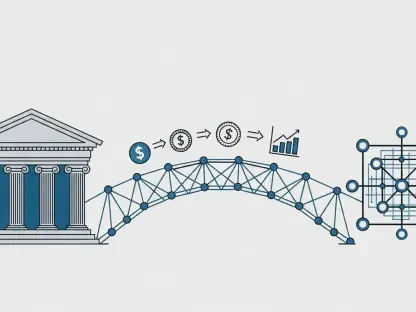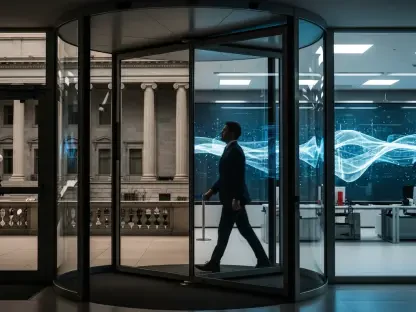Kofi Ndaikate is well-versed in the dynamic world of Fintech. His expertise spans various industry areas, from blockchain and cryptocurrency to regulation and policy.
Could you explain what the Sustainability Perception Index (SPeX) is?
The Sustainability Perception Index (SPeX), often referred to as the ‘Green Pulse Indicator,’ is a tool developed to gauge the perception of sustainability among Micro, Small, and Medium Enterprises (MSMEs). It evaluates their readiness and ability to adopt sustainable practices across different dimensions. This index serves as a barometer for understanding how MSMEs view the importance of sustainability in their operations and the extent to which they are implementing sustainable measures.
How is the Sustainability Perception Index (SPeX) calculated? What does a higher index value signify?
The SPeX is calculated based on three key dimensions: willingness, awareness, and implementation. These dimensions reflect the MSMEs’ understanding, readiness, and execution of sustainability practices. The index ranges from 0 to 100, with higher values indicating a stronger perception and commitment to sustainability. Essentially, a higher index value signifies that MSMEs are more aware of, willing to adopt, and actively implementing sustainable practices.
What were the key findings of the SPeX for the October-December 2024 period? How did the awareness dimension change?
The key findings for the October-December 2024 period showed a 5.3% decline in the overall SPeX value compared to the previous quarter. This was largely due to an 11% drop in the awareness dimension and a 12% decrease in the willingness dimension. However, there was a significant 41% increase in the implementation dimension, indicating that even though awareness and willingness were declining, the actual implementation of sustainable practices saw notable progress.
Why did the overall SPeX value decline by 5.3% in Q4 2024 compared to Q3 2024?
The decline in the overall SPeX value by 5.3% from Q3 to Q4 in 2024 can be attributed to several factors. The primary reasons were the decreases in the awareness and willingness dimensions. This decline could suggest that while MSMEs remain committed to implementing sustainability measures, there may have been challenges in sustaining awareness and motivation to adopt new sustainable practices. These challenges might include economic constraints, fluctuating market demands, or evolving regulatory requirements.
What factors contributed to the rise in the implementation dimension by 41%?
The substantial increase in the implementation dimension by 41% indicates that many MSMEs have moved beyond understanding and willingness and are now putting sustainability measures into practice. Factors contributing to this rise could include increased government incentives, better access to green financing, and greater availability of technological solutions that facilitate sustainability. Moreover, the push from global supply chain mandates might have compelled MSMEs to adopt more sustainable practices to remain competitive.
According to Dr. Arun Singh, what is the global trend in sustainability regulations, and how are MSMEs responding to it?
Dr. Arun Singh highlights that globally, sustainability regulations are rapidly evolving, prompting MSMEs to recognize the value of adopting sustainable practices to gain market share. MSMEs are increasingly aligning their operations with these regulations to meet international sustainability goals. Dr. Singh notes that global businesses play a pivotal role in this trend by enforcing sustainability mandates within their supply chains, compelling MSMEs to pursue sustainability measures to maintain their business relationships.
What percentage of MSMEs are seeking alternative financial or policy support to increase sustainability adoption? What does this suggest about the challenges MSMEs face in adopting sustainability measures?
Around 45% of MSMEs are actively seeking alternative financial or policy support to increase their sustainability adoption. This high percentage underscores the significant challenges they face in implementing sustainable practices, such as the high costs of adoption and limited access to capital. It also highlights the critical need for supportive policies and financial instruments to help these businesses overcome barriers and achieve their sustainability goals.
How has the perception of sustainability adoption catering only to select global clients changed?
The perception that sustainability adoption is restricted to serving select global clients has declined. This change signifies a broader acceptance and recognition of sustainability practices across a wider range of industries and markets. MSMEs now see sustainability as a universal requirement rather than a selective practice, reflecting the growing importance of sustainability mandates worldwide.
What are the key challenges MSMEs face in implementing sustainable practices according to Dr. R.K. Singh? Why are factors like environmental labeling and certification considered the least obstacles?
According to Dr. R.K. Singh, the main challenges for MSMEs in implementing sustainable practices include the high costs of implementation and limited availability of capital. Interestingly, factors such as environmental labeling and certification are considered the least obstacles. This suggests that MSMEs are generally eager to adopt sustainability measures and are primarily hindered by financial constraints rather than by procedural or regulatory barriers.
Can you explain SIDBI’s PANCHTATVA missions and their alignment with national goals? How do these missions help in achieving Nationally Determined Contributions (NDCs)?
SIDBI’s PANCHTATVA missions focus on five key areas: Energy Efficiency, Renewable Energy, Circular Economy, E-Mobility, and Adaptation through Nature-Based Solutions. These missions are aligned with India’s Nationally Determined Contributions (NDCs) under international climate agreements. By targeting these critical areas, SIDBI aims to scale up green finance within the MSME ecosystem, thereby helping the nation achieve its sustainability and climate goals.
What are the five pillars of SIDBI’s ‘PANCHTOOL’ strategy for greening the MSME ecosystem? How do these pillars contribute to sustainability and green finance?
The five pillars of SIDBI’s ‘PANCHTOOL’ strategy are Financing, Development, Risk Mitigant, Thought Leadership, and International Cooperation (Synergy 4 Energy). These pillars collectively support the greening of the MSME ecosystem by providing essential financial resources, promoting developmental initiatives, mitigating risks associated with sustainability investments, fostering thought leadership to drive innovation, and enabling international collaboration to leverage global best practices in green finance.
What is your forecast for the future of sustainability in the MSME sector?









